General Information of Trojan horse Agent4.AQLZ
Type: Trojan horse
Alert level: Severe
Targeted Browsers:Internet Explorer, Firefox, Google Chrome, and so on.
Targeted OS: Windows XP, Windows Vista, Windows 7
Trojan horse Agent4.AQLZ belongs to hazardous Trojan horse family that can attack random systems out of permission and notification. So many victims have a hard time removing Trojan horse Agent4.AQLZ even they have well-enough antivirus programs like AVG or MSE and update the security programs from time to time. How Trojan horse Agent4.AQLZ can come to your computer all of a sudden? What the vicious actions it may perform? What should be done for eliminating it forever? Please read the post entirely.
Transmission Modes
2) Spam email or email attachments.
3) Corrupt web sites.
4) Unknown links or pop ups.
5) Free resources like applications, drives, games, and etc. downloaded from the Internet.
Plots of Trojan horse Agent4.AQLZ
2) It may bring with malware/spyware/adware.
3) It can modify registry entries for running in the background without any interaction.
4) Its corrupt infiltrations can take up high resources for slowing down computer performance.
5) It can make system vulnerabilities that may be taken advantage by cyber hackers.
6) It opens a back door for the third party to trace and steal personal information stored on the computer.
Steps for Removing Trojan horse Agent4.AQLZ
Method 1: Deleting Trojan horse Agent4.AQLZ manually

2. Launch the Task Manager by pressing keys Ctrl+Alt+Del keys, search for and delete all Trojan horse Agent4.AQLZ running processes.

3. Open Control Panel in Start menu and search for Folder Options. When you’re in Folder Options window, please click on its View tab, check Show hidden files and folders and uncheck Hide protected operating system files (Recommended) and then press OK.

4. Tap Windows+R keys together to pop up the Run box, type in regedit and hit OK to open Registry Editor; then remove all Trojan horse Agent4.AQLZ registry entries:


HKCU\SOFTWARE\Microsoft\Windows\CurrentVersion\Regedit
HKEY_CURRENT_USER\Software\Microsoft\Windows\CurrentVersion\Policies\System “DisableRegedit” = “”.exe.dll
HKCU\SOFTWARE\Microsoft\Windows\CurrentVersion\Settings\{.exe}
HKCU\SOFTWARE\Microsoft\Windows\CurrentVersion\Policies\Explorer\DisallowRun=””
5. Remove all associated files created by Trojan horse Agent4.AQLZ:c:\Windows\System32\shdocvw.dll
%AllUsersProfile%\Programs\{random letters}\
%CommonStartMenu%\Programs\Users\””
Method 2: Deleting Trojan horse Agent4.AQLZ automatically
1) Click the icon below to download Spyhunter.

2) Install Spyhunter Step by Step:
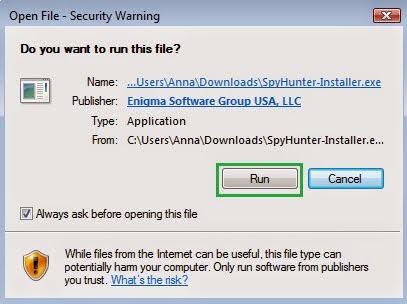
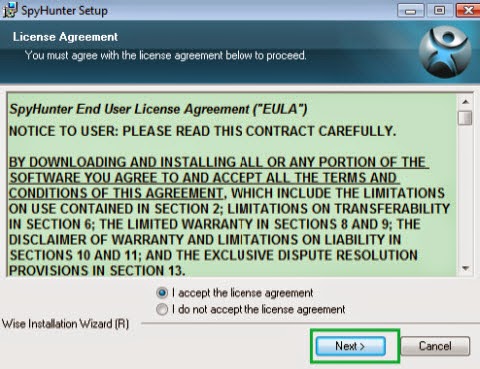
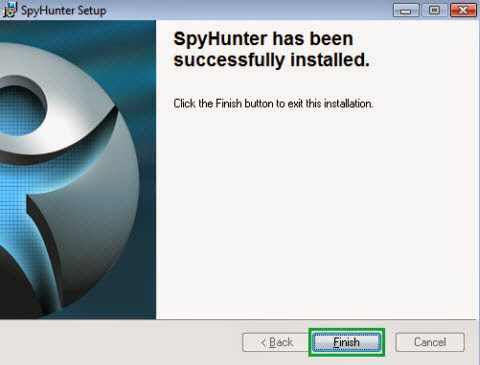
3) Start a full and quick scan with SpyHunter .
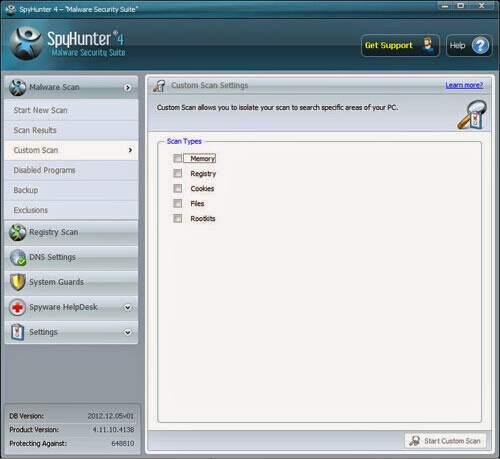.jpg)
4) Remove detected threats.
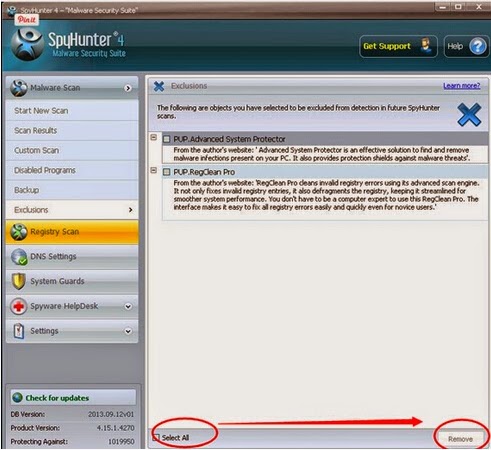
Conclusion 
2) Install Spyhunter Step by Step:



3) Start a full and quick scan with SpyHunter .
.jpg)
4) Remove detected threats.

Trojan horse Agent4.AQLZ is an aggressive Trojan horse virus. It can insert your computer without your notice and permission. It can generate severe threats to your computer. If you find it attacking your computer, you should not ignore. On the contrary, you should take actions instantly to delete.
Note
Deleting Trojan horse Agent4.AQLZ with manual way above is not an easy job. You may meet lots of difficulties. Besides, you may take a risk of losing your important documents if you make any mistake. So the sensible way is to use the manual way to remove Trojan horse Agent4.AQLZ. Downloading Anti-Malware program SpyHunter can ensure that you can remove Trojan horse Agent4.AQLZ safely and effectively. What’s more, it can prevent your computer from greater infection.

No comments:
Post a Comment